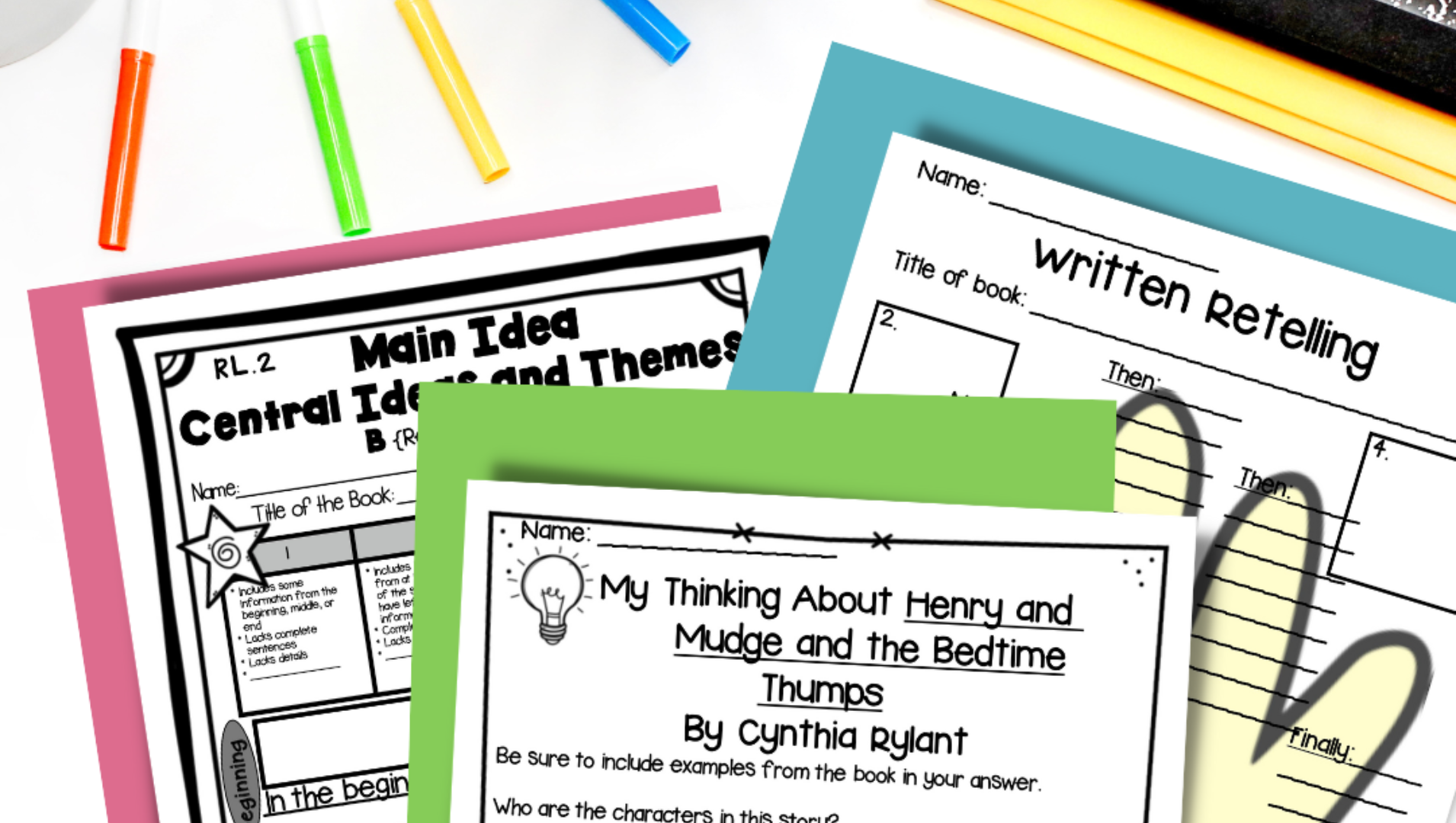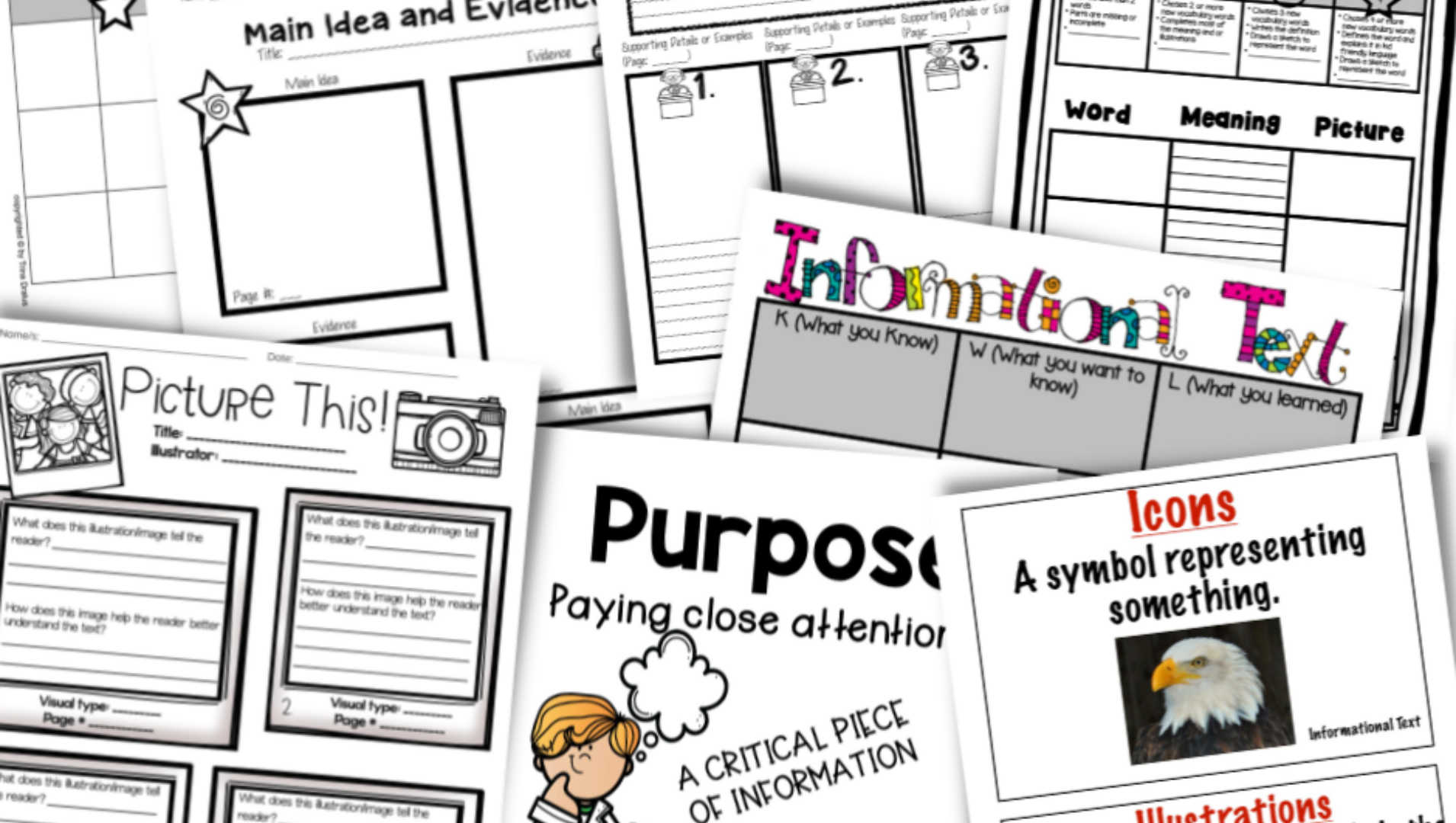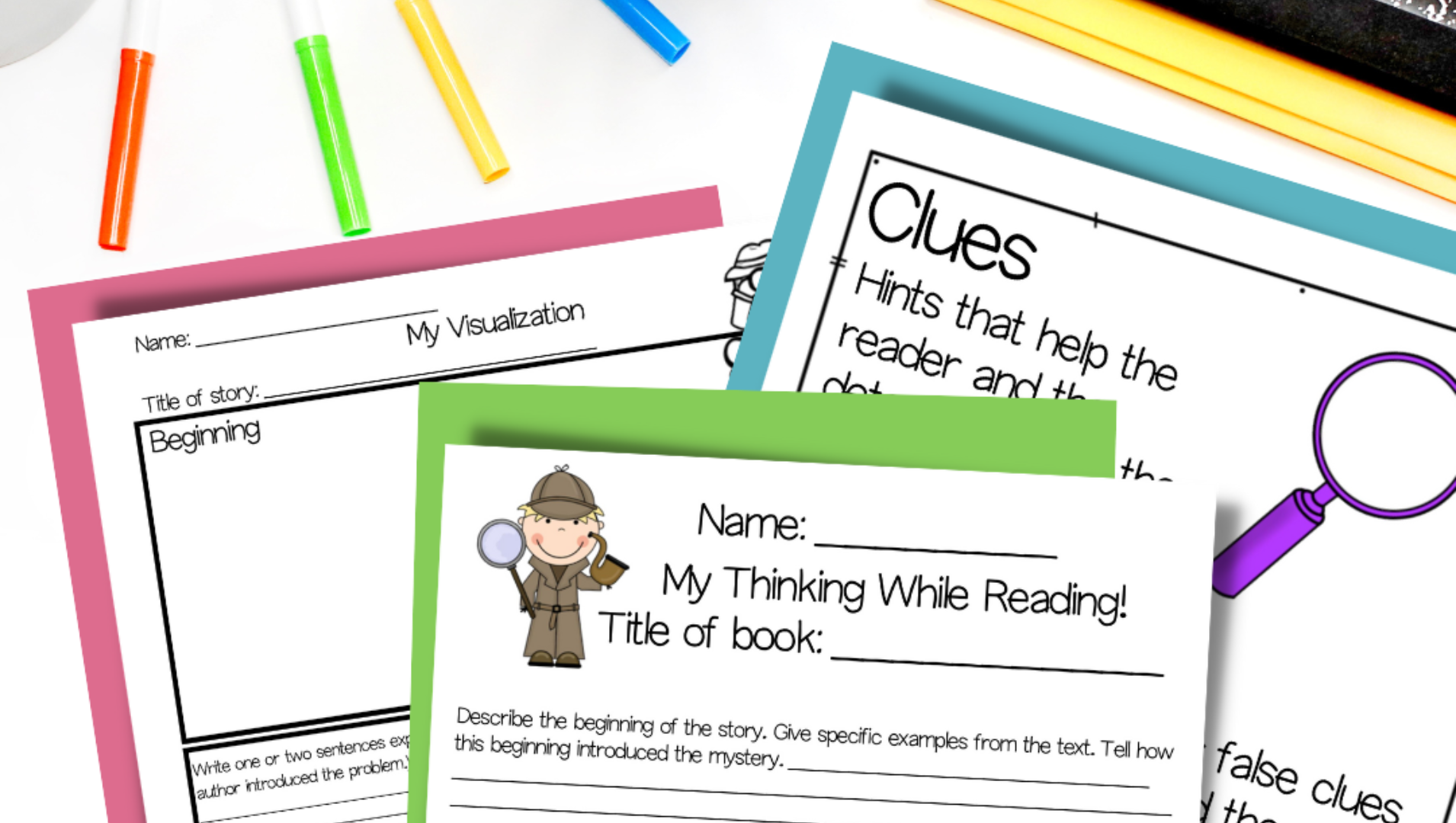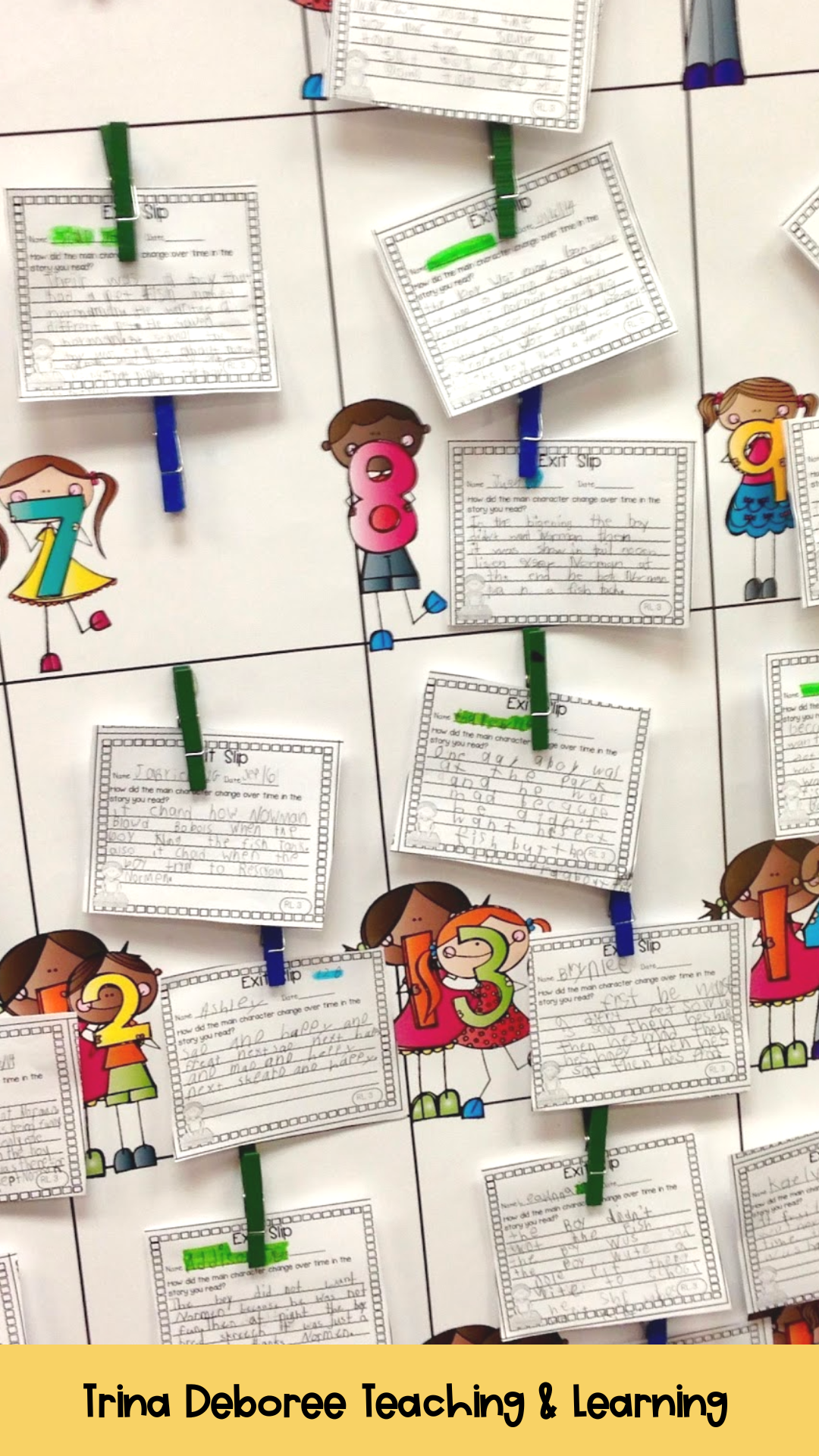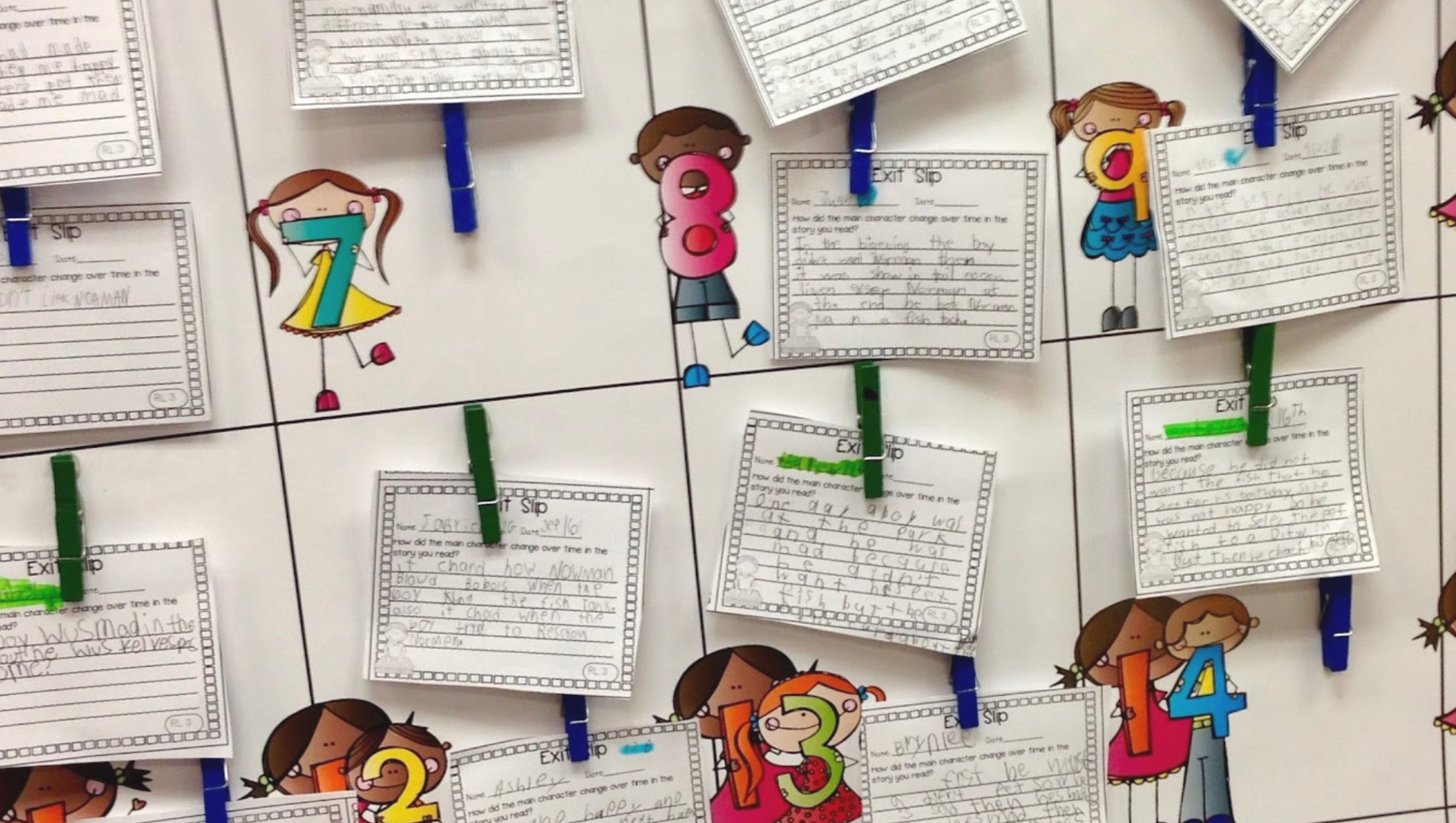OTT 224: How to Promote Effective Reading Comprehension in the in the Second-Grade Classroom
Oh, second grade. A time of innocence, wonder, and... you guessed it- reading comprehension?
Yes, you heard it right. Understanding what we read is essential for success in almost every aspect of life and is honestly the whole point of reading. Yet, comprehension can get lost in a world where we focus a great deal on WPM (words per minute). And as much as we'd like to believe that kids naturally "get it," the truth is that effective reading comprehension needs to be taught and nurtured.
So, if you're a teacher or a parent wondering how to impart this oh-so-important skill to your little ones, get ready because here we go! In this blog post or podcast episode, depending on whether you are reading or listening, we'll explore the best way to promote adequate reading comprehension in the second-grade classroom. We've covered you, from identifying the main idea to tackling those pesky comprehension questions.
The good news is second graders love to read. And a great way to help them better understand and remember what they read is to read excellent literature and informative, interesting nonfiction text. Young readers can be taken on fun adventures and dive into some fascinating topics if we choose the correct text to lead the way.
Why Reading Comprehension Matters
As a second-grade teacher of 2nd graders, you may think your students are too young to worry about reading comprehension. After all, they're just starting to read chapter books and mastering basic phonics skills. But let me tell you, comprehension is vital! Without it, your little learners won't fully understand the text in front of them, and being able to understand the text makes ALL the difference.
When it comes to reading comprehension, there are a few things you need to keep in mind. First and foremost: the comprehension passage itself. Choose passages and books with clear story elements so your students can quickly identify characters, settings, problems, and resolutions. Then encourage them to ask questions about what they've read - this helps build their critical thinking skills and allows them to dive deeper into the text. And remember - if they love what they're reading, they're more likely to comprehend it!
When we find enjoyable and exciting literature, kids want to spend time working with it and learning about it. Yes, reading comprehension worksheets can work. So can printable worksheets. But books are often the key!
Books can bring words to life. Finding books, kids love can be as easy as hopping on Amazon and searching for trending children's books for 7-year-olds. Or ask your school librarian. They LOVE to talk about books. (As a former media specialist, I know I did! That was the highlight of my job!)
The bottom line is we need text that is written for kids and draws them in. We stand a much better chance of engaging kids with engaging informational text or fun stories. One important thing to remember is the purpose of the text. Are we looking to teach deep comprehension? Then we need more than a decodable book. Are we teaching kids to determine unknown words by decoding? Then finding books and passages on their reading level makes sense. But if we want kids to FALL IN LOVE with reading, then we need not be stopped by books on a higher level. We can save those for interactive read-aloud!
Building Vocabulary: Word Walls and More
Are you tired of your second graders stumbling over the meaning of unfamiliar words during reading time? Have no fear because word walls and other vocabulary-building tools are here! These handy classroom helpers improve reading comprehension skills and expand young minds by introducing new words.
First up, we have the classic word wall. This colorful display showcases frequently used words in a prominent location for easy reference. You can even get creative with different themes or categories, such as seasonal words or adjectives to describe emotions. Remember to include visuals when placing new vocabulary words on the wall. This will help kids better remember the meaning and help your visual learners and English Language Learners. Word walls provide opportunities for discussions on synonyms and antonyms, as well.
But why stop there? Incorporating games like vocabulary bingo or matching can make learning new words even more exciting. Plus, students will love showing off their newfound knowledge during story time. So why wait? Start building those vocabularies today and watch your little ones flourish into confident readers!
Engaging with Text: Interactive Read Alouds
Reading is fundamental, but it can also be a snooze-fest for some kids and downright miserable for a struggling student. When a child struggles, the world of reading can be a major turn-off, and we want to turn that around as quickly as possible! That's where interactive read-aloud comes in! Second-grade teachers know this trick well – it's the perfect way to engage their little learners with their favorite books. Teachers can use graphic organizers and different techniques to make reading comprehension fun again.
Let's face it; everyone has a favorite book. For second graders, that can range from Henry and Mudge to Junie B. Jones. By choosing popular titles and reading them aloud to them animatedly, students are more likely to stay focused and engaged. But just having them listen isn't enough; graphic organizers like Venn diagrams or story maps help students visualize what they're hearing and promote critical thinking skills.
Because I didn't love the books suggested by the reading series, I chose my own books, created a scope and sequence with the standards, and wrote interactive read-aloud for three fiction and two nonfiction units.
I've taken out all of the guesswork for you. I even include reading response sheets, graphic organizers, lesson plans, and more inside my units.
Here is a little more about my Reading Comprehension Interactive Read Aloud Units:
Interactive Read-Aloud Lesson Plans for 2nd Grade Comprehension gives you everything you need to encourage a deep understanding of the story or information while also encouraging a love of reading while SAVING 50% off with the bundle. Lesson plans, read-aloud activities, and reading response printables are included for each unit for the entire 2nd-grade year.
The teacher reads a book throughout the week and models how to think deeply, ask questions, determine the point of view, monitor comprehension, and so much more. Essentially students are working to understand better and utilize what they are reading and hearing. This can be used as a shared reading, an interactive read-aloud, or a close reading activity.
Each week we focus on a different comprehension standard and strategies that will take young readers on a reading journey that will help them fall in love with books and learn to think deeply about the text. All lessons are aligned with standards. This can be used as a stand-alone curriculum or supplement your current curriculum.
Each reading unit is standards-based, including complete lesson plans and graphic organizers for formative assessment with digital and print options. (Digital options are available with TpT Easel.)
Bundled Reading Units for the Entire Year- These close reading workshop lesson plans were created for teachers BY a teacher. Each of these units provides 4-6 weeks of detailed Reading instruction. Lessons include essential questions based on Reading Standards, a mini-lesson (or sometimes a maxi-lesson), a gradual release of responsibility framework, an introduction to a standard, and a close reading focusing on fluency, comprehension, or vocabulary. Formative assessments are included.
Additional Differentiated Standards-Based Assessments with rubrics, an area for student input, and differentiated options have been added.
These are the concepts/Standards that are covered in Unit 1: A close look at Characters and an Introduction to Reading Workshop
Genre focus: Realistic Fiction and some Fantasy
RL.1 Asking and answering questions
RL.2 Recounting stories
RL.3 Character responses to major events and challenges
RL.4 Word meaning
RL.5 Story structure- how the beginning introduces a story, and the end concludes the story
RL.6 Point of View
RL.7 Information gained from illustrations
RL.9 Compare and contrast two versions of the same story
RL.10 (Text complexity increases throughout the unit)
Unit 2: Informational Text An Introduction to Nonfiction
Can be used with any Informational Text/Nonfiction
RI.2 Main idea
RI.3 Connections in concepts/events/procedures
RI.5 Text Features
RI.6 Author's purpose
RI.7 Specific images and how they contribute to the text
RI.8 Supporting details that support the author's purpose
RI.10 (Complexity is high if use technology integration ideas given)
Unit 3: Gripping Characters with a Focus on Mysteries
Genre: Mysteries
RL.2 Recounting stories
RL.3 Character responses to major events and challenges
RL.4 Word meaning
RL.6 Point of View
RL.7 Information gained from illustrations
RL.9 Compare and contrast two versions of the same story
RL.10 (Complexity builds in this unit. Mysteries are great for inferring and analyzing text)
Unit 4: Informational text with an integration of the Content Areas (Science- Life Cycles and The Body)
Genre: Informational Text/Nonfiction
Technology Integration
RI.1 Asking and Answering questions
RI.2 Main idea
RI.4 Word meaning
RI.5 Text Features
RI.7 Specific images and how they contribute to the text
RI.9 Compare and contrast points of view presented by two texts on the same topic
RI.10 (Complexity is high if using technology integration ideas that are given in lesson plans)
Unit 5: Folktales, Fairytales, and Fables
Genre: Folktales, Fairytales, Fables, Fantasy
RL.1 Asking and answering questions
RL.2 Recounting stories
RL.3 Character responses to major events and challenges
RL.4 Word meaning
RL.6 Point of View
RL.7 Information gained from illustrations
RL.9 Compare and contrast two versions of the same story
RL.10 (Complexity is high in this unit. Fables and folktales can be especially difficult for younger students to grasp. A high level of support may be needed in this study.)
All Reading Standards are taught, and comprehensive assessment is available in each unit.
Guided Reading Groups: Small Group Instruction
As a second-grade teacher, you know that reading comprehension is essential for your student's success. But let's be honest, keeping a whole seven-year-old class focused on one reading passage can be daunting. That's where guided reading groups come in - the small group instruction that boosts their understanding and interest!
Here's the deal: instead of trying to wrangle the whole class into paying attention to a dull text, get creative with how you present it. Divide your students into small groups based on their current abilities and assign them different but related passages to read. Have each group discuss their passage amongst themselves and find similarities or differences with other groups' texts. Please encourage them to share their findings so they can expand on what they've learned from each other.
Small group instruction is also a way to go deeper into a comprehension strategy that kids may not be getting; in that case, the group looks more like a strategy group rather than a leveled Guided Reading group.
Independent Reading: Creating a Classroom Library
How do you create a classroom library that will keep them engaged? Here are some ways to stock your shelves with short stories and a fairy tale or two that will help your students become better readers.
First, consider using online resources like Storyline Online or Epic! Books for Kids. These digital platforms offer hundreds of high-quality books read by celebrities and authors alike. They're perfect when you need access to physical books or need something to supplement your classroom library.
Second, feel free to get creative with the types of books you include in your collection. Graphic novels, comic books, and even recipe books can be great resources for improving reading comprehension for second grade students.
The more options your kids have, the better! I had a MASSIVE classroom library. But it did take years to build and lots of my own money. Look at garage sales and places like Goodwill. You can find books for a quarter. Second-grade students don't care where you got the book; they just want to read it!
Assessment and Feedback: Monitoring Progress
As parents, teachers, and educators, we all understand the importance of monitoring a child's comprehension skills in the classroom. After all, reading is at the very core of our intellectual development. And yet, despite all our best efforts to teach our little ones how to read and comprehend effectively, knowing how well they are doing can still be challenging.
Thankfully, there is an easy way to assess your child's comprehension skills without resorting to complex tests or lengthy assessments. The secret? Ask them a simple question! That's right – by asking your child a central question about what they have just read (such as "Who was the main character?" or "What happened in chapter two?"), you can quickly gauge their understanding of the material.
Of course, you will need more than simply asking one question to give you a complete picture of your child's reading comprehension abilities. So I created standards-based assessments to give you a strong vision of how your students are doing on all reading comprehension standards.
Second Grade ELA Reading Comprehension Year-Long Curriculum Bundle provides a quick reading comprehension assessment for each comprehension standard. This print version makes it easy to make two piles- got-it and needs more work making small group creation a breeze.
Standards-Based grading has always been challenging for standards-based report cards. This assessment bundle includes standards-based grading rubrics on each graphic organizer. This differentiated assessment bundle for second grade is a differentiated approach to assessment. This product was created to help teachers assess all ELA reading standards. This pack addresses all informational text standards {RI.1-RI.9} and literature standards {RL.1-RL.9}. I hope you will have various ways to see what your students know. Each assessment has two options (with 5-10 different approaches to assessing all standards).
★ The open-ended nature of these graphic organizer assessments allows me the opportunity to see how a child is processing information and thinking independently.
★ This set contains the Standards-Based Assessment for ALL Literature and Informational Text Standards.
This pack contains:
* Two options for each assessment- one with more support
* Rubric to ensure that your students are fully aware of the criteria before completing the page
* Blanks are left on the rubric so that you can include your students in setting expectations for their work
* General Essential Questions for the Standard Assessed
* General Standards-Based Assessment Rubric
I also have some quick reading comprehension exit tickets that work well too.
Exit Tickets (or exit slips) are a great idea to check for understanding in second grade! Formative and assessment have always been challenging! This pack has both Reading Literature standards and Informational Text Standards bundled into one package! Each standard can be assessed in 4-11 different ways.
Exit tickets are great for:
* They provide a quick and easy check of student understanding
* There are four slips per page; it allows for work space while conserving paper/copies
* The information a teacher gains from these slips makes it easy to plan your next course of action based on the results of the exit slips
Exit slips allow teachers to check students' understanding of concepts taught in class quickly. At the end of class or a lesson, students fill out the slips and hand them in as a "ticket" out the door. In a self-contained classroom, exit slips can help transition as students "exit" one subject or activity and move on to another. Teachers can quickly assess student understanding. This pack makes using this powerful assessment tool simple!
These exit slips also make a tremendous summative assessment of each Reading Literature and Informational Text standard. Determining mastery of standards just got a lot easier!
Related Articles and Resources on Reading Comprehension:
Reading Comprehension on Trina Deboree Teaching and Learning
North Carolina's Department of Public Instruction
Conclusion: Encouraging Lifelong Learning
In conclusion, instilling a love of reading and learning in second graders is crucial for their future success. By improving their reading comprehension skills, we can encourage them to become lifelong learners who are always eager to explore new ideas.






